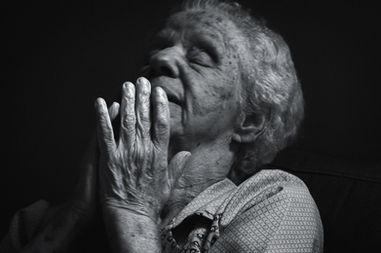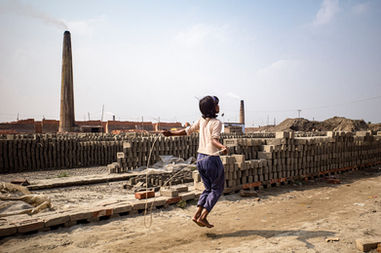
THE SHOW MUST GO ON
October 23, 2020
PICTORIAL STORY
Photography and story by Simo Väisänen
Introduction by Melanie Meggs
When we think of circus, we often conjure up images of wild animals, daring aerial acts and colourful clowns. But there is much more to the circus than just entertainment and spectacle. In Finland, the circus is an art form that has been around for centuries, evolving and growing to become a respected and much-loved part of the country's cultural heritage. This is why Simo Väisanen, a highly accomplished Finnish photographer, has had a long-held fascination with the circus and has captured some stunning photographs of shows by Circus Caliba, Circus Florentino and Circus Finlandia between 2012 and 2019. His love for old Finnish black and white movies, Italian neorealism and Akira Kurosawa's and Sergei Eisenstein's productions shines through in his photographs, captivating audiences with the beauty of the circus and its characters. Step into the magical world of the circus with Simo Väisanen's photography and embark on a journey of discovery and delight!
-min.jpg)
I have always been a great fan of circus. It all began when me and my kid brother hadn't even started school yet. Our Mum took us to a circus which had come to our hometown Kuopio in Finland. We saw lions, dogs, horses and one Indian elephant doing their act with their trainer or tamer behind his or her whip. Nowadays there are no wild animals in circuses in Finland. That's the law. I believe that's ok. Lions belong to Africa.
Circus (sirkus - fin, circus - en) in Finland began when a French equestrian circus group performed in Turku in 1802. In successive decades Finland became a fixture on international circus tours as groups passed through on their way to St. Petersburg from Stockholm. During the last 200 years circus has grown to become a respected, active and independent art form.
The first Finnish circus troupe started performing in 1896. At the beginning of the 20th century, circus acts were often performed as part of touring funfairs, but long distances, hard winters and the high entertainment taxes that were levied on circus hindered sustainable circus activity. Finland is the third country in Europe, where circus has been accepted into the National Inventory of the UNESCO Convention for the Safeguarding of the Intangible Cultural Heritage.
The second awakening of Finnish circus began in the 1970s. The founding of our biggest touring tented circus, Sirkus Finlandia in 1976 revived a long-lost Finnish circus tradition. Youth circuses were also established in the same decade. Since then, a huge rise in the number of children and youth engaged in circus as a hobby has fed a new generation of performers and spectators. Today there are more than 8,000 amateurs in 44 youth circus schools and clubs all around the country. High quality youth circus education is widely available and is designed to provide a solid footing for professionalism in this art field.
Contemporary circus art began to develop in Finland in the 1990s. One important step in the development of the art form in Finland was the founding of The Association Cirko – Centre for New Circus in 2002. Between 2004 and 2006 Cirko carried out a development project for a new circus with funding from the Finnish Cultural Foundation. In 2006 Cirko was divided into two, so that the tasks of documenting, developing and promoting circus arts became the responsibility of Circus Info Finland and Cirko continued as a production centre.
The opening of the Cirko venue and residency centre for contemporary circus in Helsinki in 2011 was a major step forward. Today we have around twenty full-time contemporary circus companies and around the same number of solo artists, duos, collectives and working groups, with an estimated 250 circus professionals. Circus is being taught in two educational institutes.
The street arts sector in Finland still remains quite small and unorganised. Outdoor performances can be seen at summer festivals in Finnish cities and villages, but our short summertime and unpredictable weather conditions have hindered the growth of the sector.
The Finnish government has systematically supported circus arts over the last decade. Nevertheless, compared to the state support received by theatre and music venues the support for circus is still very small-scale. In 2014 circus art was finally included in the law for theatres and orchestras, but there until now there are no circus organisations that receive legislated funding from the government.
Circus Finlandia, where I took some of the photos shown here, is The National Circus of Finland. It is a touring family circus founded by the Jernström family in 1976. The Circus Finlandia Grand Tour around Finland starts in April and ends in Helsinki in October. More than 200,000 Finns see their programme every year. Other famous big circuses that have been touring in Finland in the 21st century are Sirkus Caliba, Sirkus Florentino, Sirkus Tähti and Sirkus Valentino.
There's one image though that will stay in my mind forever. A trapeze act is an essential part of any circus. In 1960's there were no safety nets in circuses. That first ever evening at the circus there was this already a bit elderly German couple with their only son in his twenties. The son flew through the air and his parents kept watching him closely at the same time taking care of the ropes that controlled the trapeze bars. Suddenly the son couldn't catch the bar coming towards him and he came down almost headfirst and thudded on the sawdust. The poor mother ran screaming to her son and started caressing his back gently with her hand. Soon we heard the ambulance. The paramedics did their job and in no time the ambulance headed to the hospital with the whole family in it. The circus band started playing again and the ringmaster announced the next performance.
The show must go on!

Simo Väisanen's photography captures the beauty and timelessness of the circus, an art form that has been around for centuries in Finland. His works are inspired by the greats in the world of film, bringing to life the spectacle of the circus world. We take the opportunity to thank Simo for allowing us to step into the beautiful world of the circus and be inspired by the characters and stories that he captures with his photographs.

The views, thoughts, and opinions expressed in the text belong solely to the author/s, and are not necessarily shared by The Pictorial List and the team.








































